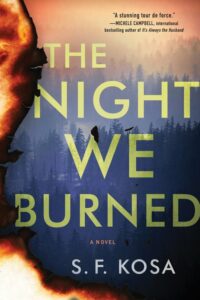Since my first novel was published in 2012, there is one interview question I have been asked more than any other: how does being a clinical psychologist affect your writing? The answer involves not only the material I’m drawn to but also where my focus lies within the story. As an example, in my upcoming novel, The Night We Burned, the main character—a fact-checker—scrambles to conceal the truth about her connection to a twenty-year-old cult massacre, all while dealing with an unacknowledged eating disorder resulting from the trauma she experienced as part of said cult. I wanted to show an extreme example of the ways we carry our past experiences in our bodies, often without realizing how deeply and subtly they still affect us.
But being a clinical psychologist doesn’t only affect how I write—it also influences how and what I read and enjoy. And it’s not all about whether a mental illness is accurately depicted or a therapy session is skillfully wrought (though that’s always appreciated, particularly given that the nefarious-therapist trope is still alive and well). Along with their nimble pacing and intricate plots, my favorite books capture something tangibly and often uncomfortably real about human development, thought processes, coping mechanisms, and interpersonal and cultural dynamics. Here are some of my favorites:

Room by Emma Donoghue
When I first heard about this novel, I was worried it sounded gimmicky—a suspenseful novel told from the perspective of a five-year-old?! As a psychologist who specializes in early childhood, I spend a lot of time thinking about the mental and emotional worlds of very young humans … and am therefore keenly aware of how tough they are to fully comprehend as an adult. But Donoghue captures the heart of the story: little Jack lives with Ma in Room, literally one room they are never allowed to leave. Because he’s secure in his attachment to his mom and therefore trusts everything she tells him about their tiny world, he’s happy, despite the reader’s creeping sense that something is very wrong with this picture. But as his situation “improves” from an adult perspective, the emotional turmoil and negative feelings he experiences make complete sense—but only if you view the world through a child’s eyes.

Mirrorland by Carole Johnstone
This book is told from the perspective of an adult, but the author harnesses the power of childhood imagination to great effect. Twenty years ago, eleven-year-old twins Cat and El showed up bloody and traumatized on an Edinburgh dock, requesting passage on a pirate ship. Now the two are estranged, and El lives in the creepy old house the two escaped from—until she boards her boat and disappears into the North Sea. Now Cat, convinced El is still alive and playing a cruel game, must revisit the house and her past, untangle fact from fantasy, and dig up memories from under the protective layers her mind laid down to ensure her emotional survival. This is a plausible depiction of how our minds work to keep us upright and functioning in the face of childhood trauma, and of the double-edged sword of facing the past head-on.
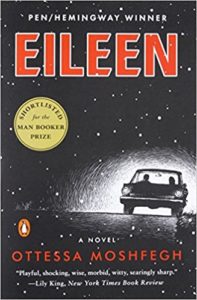
Eileen by Ottessa Moshfegh
With her morbid thoughts and habits, along with her merciless observations about herself and others, the eponymous main character of this book (set in Massachusetts in 1964) will make you squirm. Eileen, who works as a secretary at a prison for boys, is the adult child of an alcoholic—a father she supplies with daily gin in the hopes he’ll pass out and leave her alone. This novel is about her escape from her bleak situation, but beware: her journey to empowerment and independence takes an unexpectedly bloody path. What I loved about this book was the unvarnished frankness of its repellent-yet-compelling narrator, a reminder that people’s desires, which not infrequently come in unattractive packages, are still valid and understandable if you care to spend some time trying.

Sharp Objects by Gillian Flynn
I am in awe of just about anything this author writes, but this book, Flynn’s debut novel, is my favorite. The protagonist, Camille, is a Chicago newspaper reporter sent back to her hometown to investigate the disappearance of one little girl and the murder of another. This assignment is already tough enough, but it also means that Camille has to revisit her childhood home and the disturbing memories that reside within, not to mention the bizarre present-day dynamics with her mother and much-younger sister, Amma. Camille uses alcohol to cope, and she also engages in self-mutilation, a not uncommon but complicated behavior that is too often misunderstood.
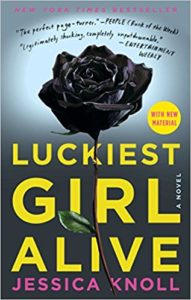
Luckiest Girl Alive by Jessica Knoll
I will admit there’s a pattern here—this is the third book on my list that features a very prickly and complicated heroine that I adored for her lacerating perspective—this one hiding a poignant vulnerability and fear of exposure. Ani Fanelli is a glamorous NYC magazine editor with a handsome fiancé, a killer fashion sense, and a high school past that she’s eager to keep quiet: one that involves an agonizing sexual assault and all the humiliation, stigma, and gaslighting that can exacerbate already deep psychological wounds. It’s a tough but worthy read as the author deftly links Ani’s past and present decisions and desires into a coherent narrative that sheds light on the reverberating effects of trauma.
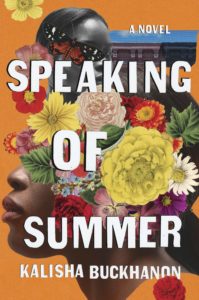
Speaking of Summer by Kalisha Buckhanon
Rarely have I read a book with a more claustrophobic perspective, and I mean that in the best way. Buckhanon’s use of detailed description makes you feel like you’re seated firmly within this protagonist’s head, and it’s one mind-bending ride. Summer Spencer vanishes off the roof of her Harlem brownstone, leaving only footprints in the snow. Her twin sister, Autumn, is determined to find her—but everywhere she turns, she’s confronted with the fact that no one seems too concerned about where a nonfamous, not-rich Black woman might have disappeared to. I won’t spoil a thing here, except to say that this is a fresh perspective on the fact that there is a stress, a weight, and a tension to racism, like an undertow that makes getting to shore all the more exhausting, even for the strongest of swimmers. But it’s a context more than a focus here, as is the steadiness and necessity of community the author depicts with an array of nuanced secondary characters.

Bath Haus by P.J. Vernon
On its surface, this is a slick and beautifully paced novel featuring a man desperate to protect the life he’s built by covering up an almost-deadly episode of infidelity with a thick layer of lies. But this thriller also offers a rich and unvarnished depiction of a culture and characters not often given starring roles in this genre and too often fetishized in others: gay men. Oliver, the protagonist, is in recovery from an opioid addiction, and his struggles with temptation are viscerally relatable, as is the relationship dynamic that has resulted with his partner, Nathan, whose tendency to infantilize Oliver contribute heavily to Oliver’s urge to have a moment of unobserved indulgence and freedom.
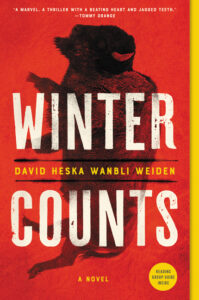
Winter Counts by David Heska Wanbli Weiden
Speaking of rich and unvarnished depictions … Virgil Wounded Horse, an enforcer on who exacts justice for those the American legal system neglects, nearly loses his nephew, Nathan, to an overdose and goes on a mission to track down the scourge selling heroin to kids on “the rez.” It’s a compelling and gritty crime novel, a solid mystery—but it’s also a keen portrait of the modern consequences of colonization, the relentless drag of injustice and poverty that too often leads to despair, and the power of dignity, community, and spirituality. The author paints us a lovingly complex picture of the pulls of loyalty, grief, ambition, heritage, and identity—and the absolute necessity of hope and belongingness (a major predictor of psychological wellbeing, by the way).

Big Little Lies by Liane Moriarty
Like many of the other books on this list, Big Little Lies isn’t the only one in its genre that covers the psychological topic at hand; it just happens to do it really well while being a giddily readable tale. This murder mystery set in a seaside town on the Australian coast features beautifully wrought female characters, dynamics, social anxieties, and friendships. Among the friends is Celeste, an elegant, lovely, and wealthy woman caught in a marriage with a handsome, charming, controlling, and violent partner. Her journey toward making a change is classically nonlinear as she weighs the risks and all she has to lose with the possibility of not living in fear.
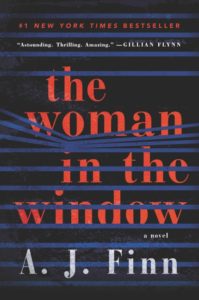
Woman in the Window by A.J. Finn
This one is complicated for me, but ultimately a win. In this tightly written, perfectly constructed novel, an isolated, house-bound, substance-dependent woman witnesses a murder from her window—or does she? Our main character is a (not currently practicing) child psychologist, see. Representation! Although there are some inaccuracies in terminology that I struggled with, I appreciated the depiction of the ways agoraphobia/panic, grief, and substance misuse can intertwine and sustain each other, along with some of the scenes with the protagonist’s mental health provider. And also—sorry if this is a spoiler—I was grateful that the psychologist, while human and flawed (as all of us are!) didn’t turn out to be evil. Always a plus in my book.
***


